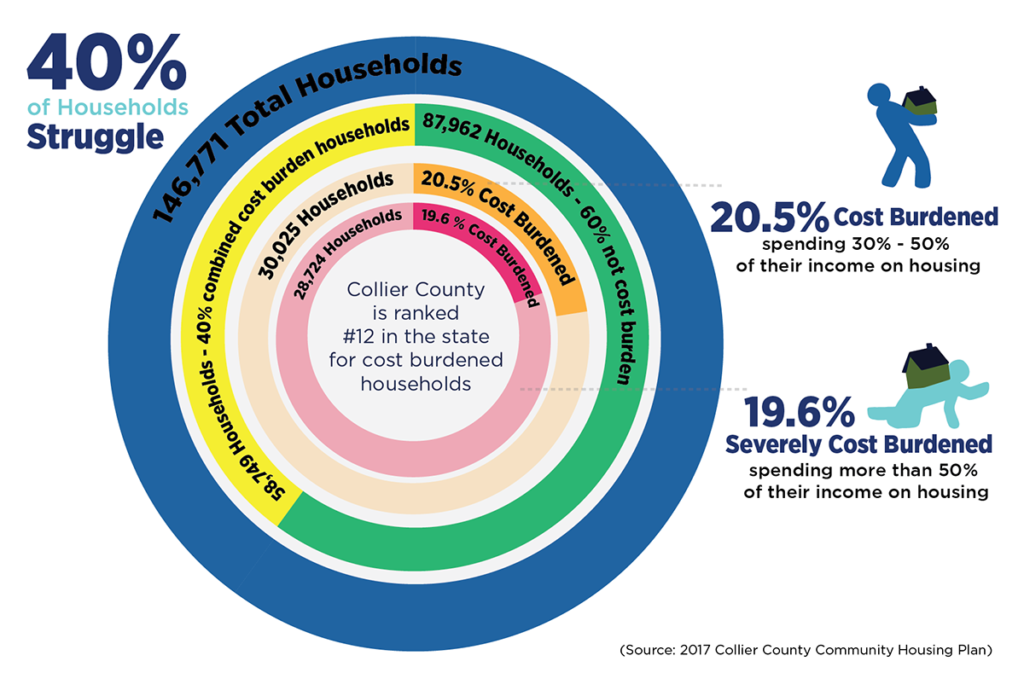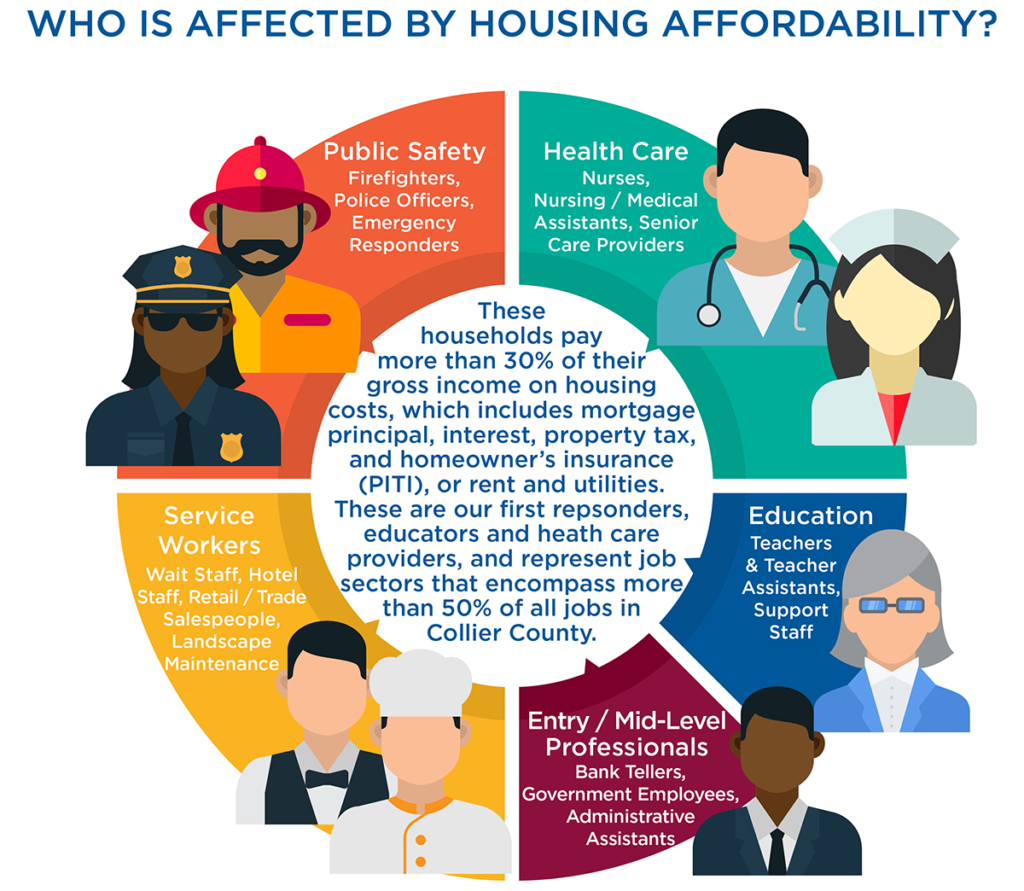What is affordable housing?
Housing is considered affordable when a household spends no more than 30% of its monthly income on a home priced at fair market rate.

About 35% of the jobs in Collier County pay less than $35,000 per year and 58% pay less than $45,000 per year. Someone earning a $45,000 salary should be able to afford a housing payment of $1,125 per month but the 2023 median monthly rent in Collier County is almost double that at $2,230. Rent has increased 28% between 2020 to 2021, and an additional 25% between 2021 to 2022, for a total increase of more than 50% in the last two years. This is the highest increase in the United States. It easy to see that with more than half of Collier County’s salaried jobs being less than $45,000, many median-earning households cannot affordably live – rent or buy median-priced homes, which is averaging $571,500 in 2023. Because of this dynamic, providing more affordable housing options is crucial.
It’s also important to note that affordable housing is not the same as public or Section 8 housing. Affordable homes look just like regularly priced homes except the cost is reduced to help working-class families that meet certain income criteria thrive in our community.
Who is in greatest need?
Teachers, emergency responders, government employees, nurses, and other working-class families and individuals.

